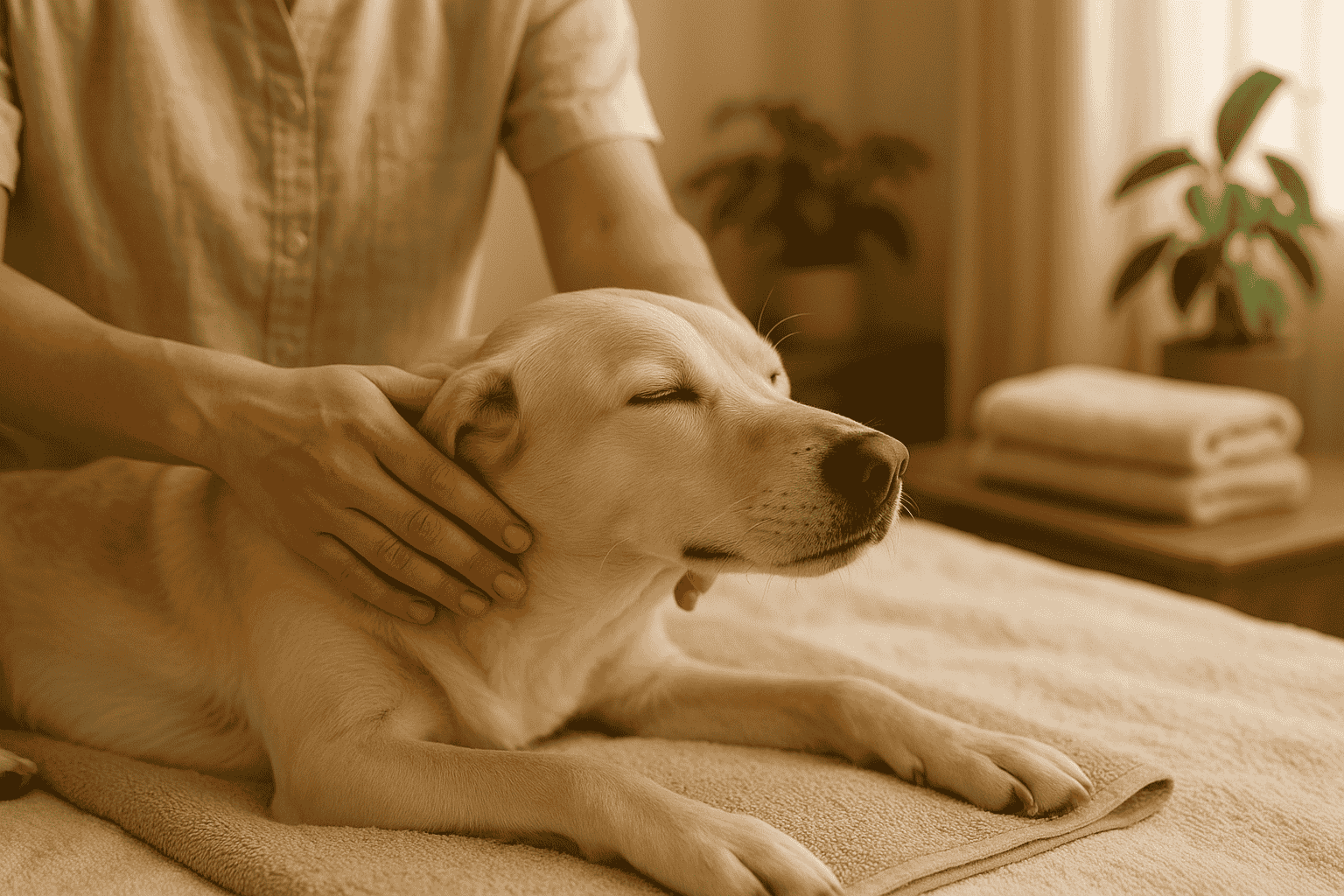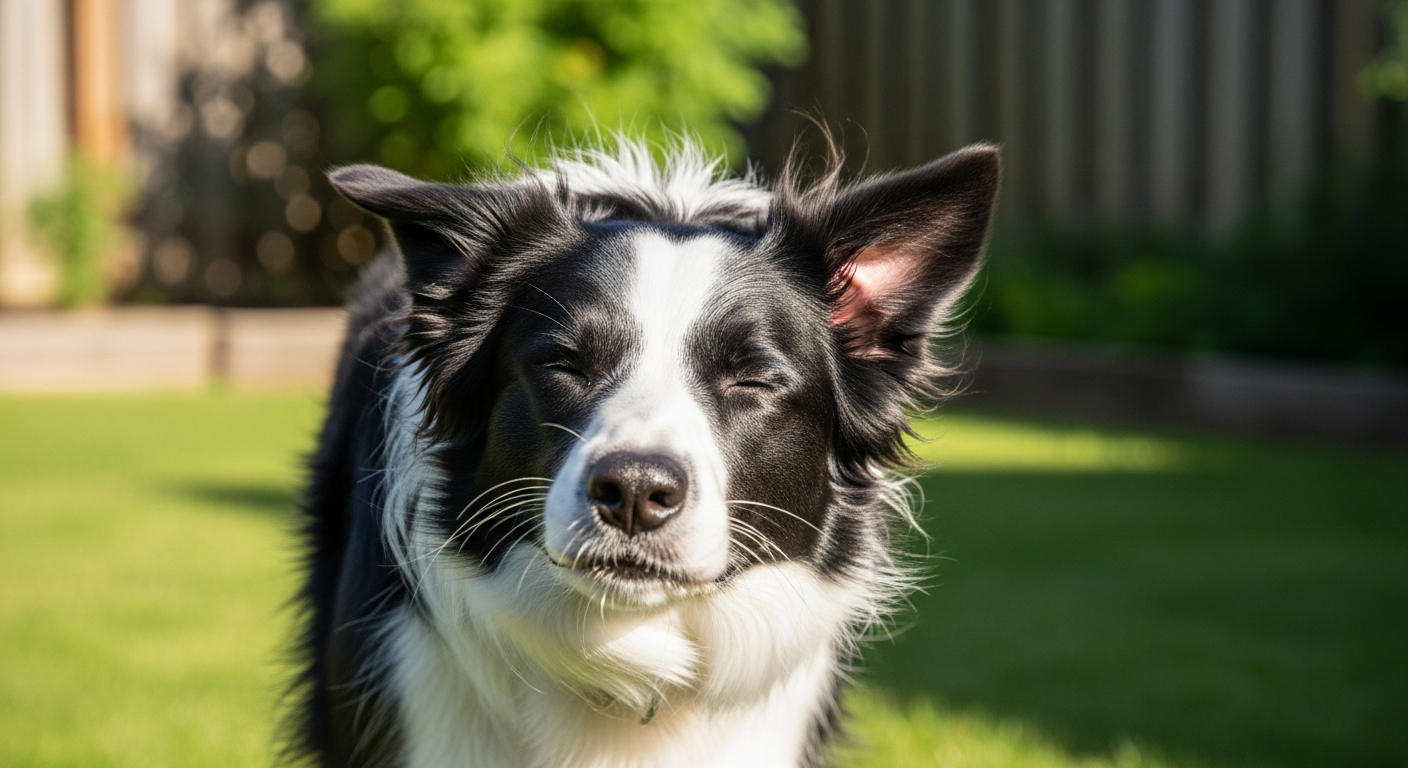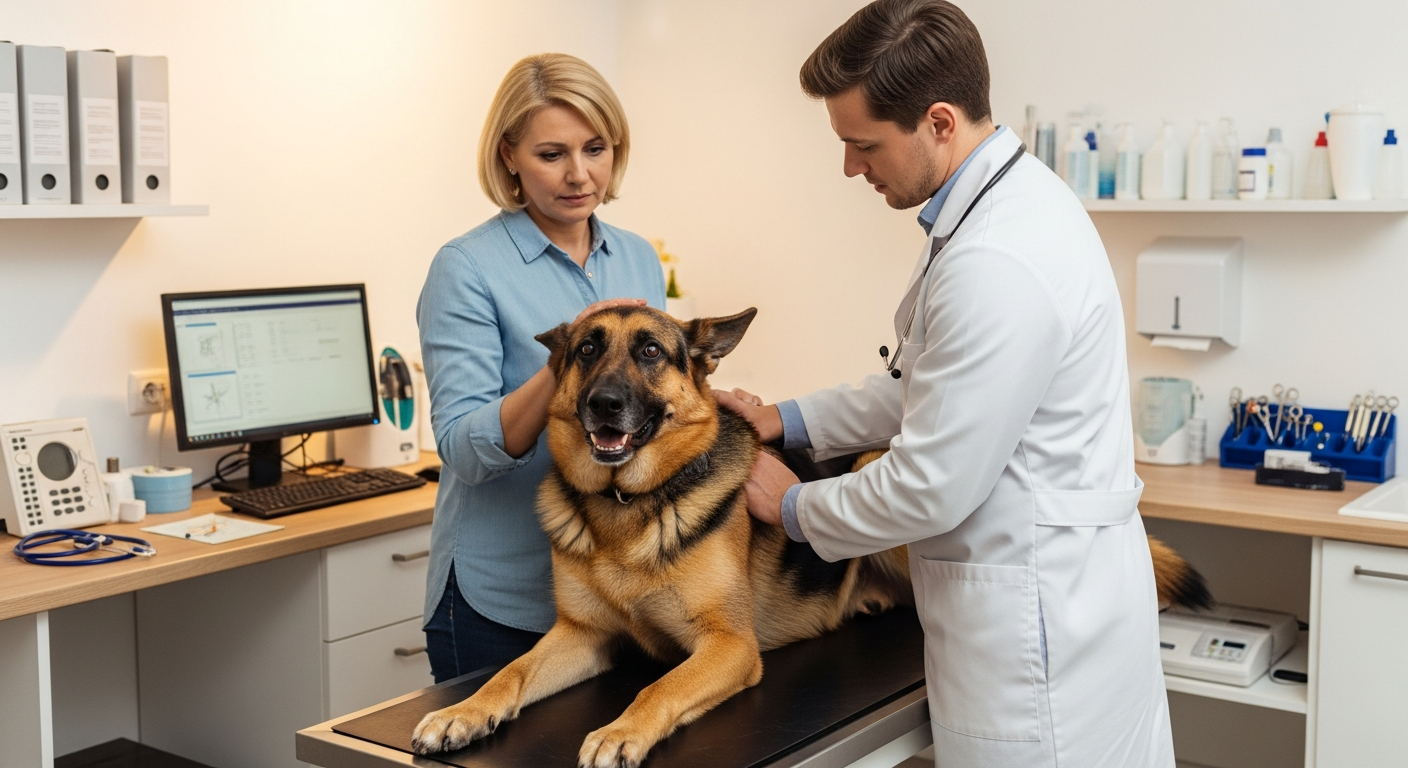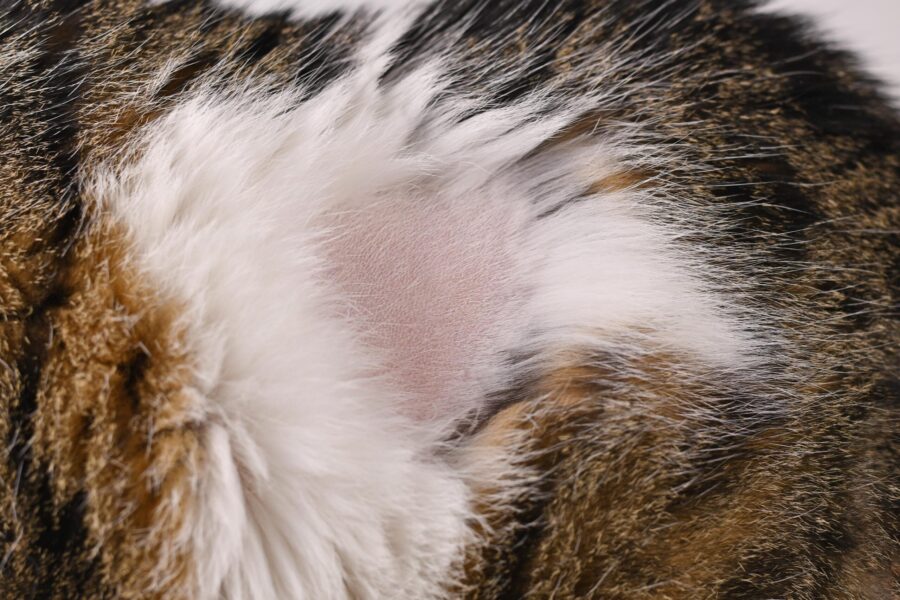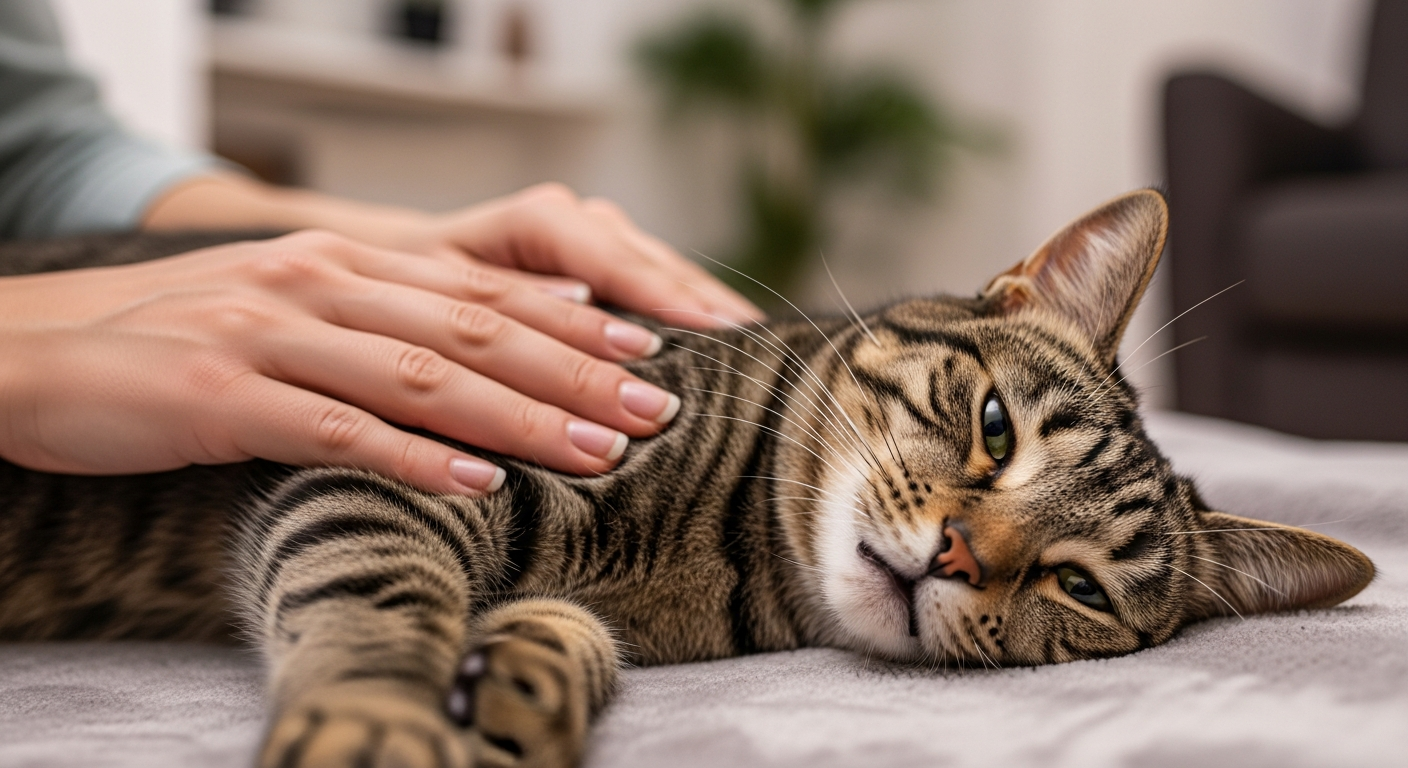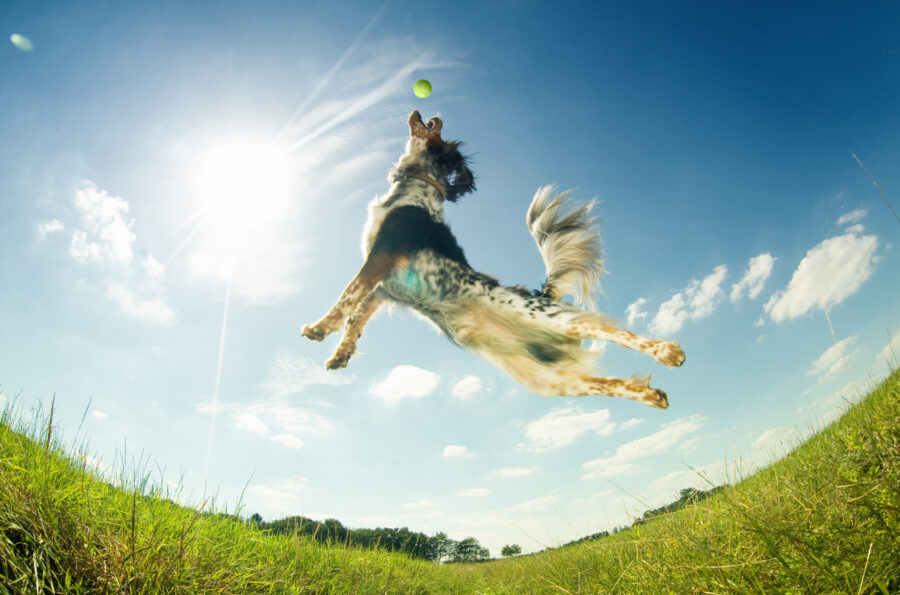Your pet can’t say, “I’m hurting.” But their body speaks in other ways. Maybe they slow down during walks. Maybe they will stop jumping onto their favorite chair. Some grow quiet, others whine, or flinch when touched. These small changes are their way of asking for help.
Pain and stress often hide beneath the surface. Many pet owners don’t notice the problem until it worsens. That’s why gentle, hands-on care, like Tui Na, can make such a difference, offering comfort before issues arise.
Tui Na may look simple, but its effects run deep. It helps ease stiff joints, calm anxious minds, and support healing, all without the use of drugs or machines, just skilled hands, gentle pressure, and the right touch in the right place.
Soft touch. Steady hands. Lasting relief.
Let’s take a closer look.
What Is Tui Na?
Tui Na (pronounced “twee-nah”) is an ancient Chinese therapy that translates to “push and grasp.” That name says it all; it’s built around targeted hand movements, such as pressing, kneading, and rolling, to guide energy and blood flow through the body.
It’s not random rubbing. Tui Na focuses on specific points, many of which overlap with acupuncture spots. But instead of needles, it uses the hands. That makes it much more comfortable for pets who might be needle-shy.
These points connect to muscles, nerves, and even internal organs. By activating them, Tui Na supports the body’s natural healing process. It can relieve pain, support digestion, and lift mood in a way that feels natural and soothing.
Most pets relax into the session. Dogs might let out a deep sigh. Cats may stretch, blink slowly, or even fall asleep. There’s no loud noise, no harsh movement—just calm, focused touch with purpose.
Tui Na isn’t just a massage. It’s care with intention.
Why Pets Need It
Pets get sore. They get stiff. They feel stressed. But they can’t stretch like people or ask for a massage. Tui Na gives them the relief they need, without drugs or surgery.
This therapy is great for:
- Older pets with arthritis
- Dogs who limp after play
- Cats with digestive trouble
- Anxious or restless animals
- Pets recovering from injury or surgery
Even healthy pets benefit. Tui Na helps them stay balanced and active longer.
How Tui Na Helps
Tui Na may look simple, but its effects can be powerful. It doesn’t rely on machines, tools, or medication; it just requires the hands and knowledge of where and how to use them. Through specific techniques like pressing, rolling, and rubbing, Tui Na supports the body’s natural healing abilities.
It addresses both physical and emotional issues in pets. Whether your dog limps after a long walk or your cat hides during storms, Tui Na may help bring relief.
Let’s examine how this therapy promotes your pet’s well-being.
#1: Relieves Pain and Stiffness
Pain and stiffness can slow your pet down. Dogs may hesitate to climb stairs. Cats may stop jumping onto their favorite spots. You may notice limping, stiffness after naps, or less play.
Tui Na helps by increasing blood flow to sore muscles and joints. Better circulation means more oxygen and nutrients reach the area. That reduces inflammation and helps ease tension.
During a session, gentle pressure is applied to key points along the spine, hips, or legs, where pain often builds. With time, movement improves. Pets become more flexible and comfortable doing everyday activities again.
It’s a natural option for arthritis, joint stiffness, or muscle strain.
#2: Eases Digestive Problems
Digestion plays a major role in a pet’s overall well-being. When digestion slows down or becomes irregular, pets can suffer from gas, bloating, or constipation.
Tui Na techniques include motions that support the stomach and intestinal functions. These movements stimulate certain points on the belly and sides of the body that are connected to the digestive flow.
By encouraging better gut movement, Tui Na helps reduce discomfort. It can support nutrient absorption and relieve mild digestive upset without relying on medication.
This is especially helpful for older pets or those with sensitive stomachs.
#3: Reduces Stress
Pets get stressed just like people do. Loud noises, new environments, or being left alone can trigger anxiety. Signs include shaking, hiding, barking, restlessness, or loss of appetite.
Tui Na helps soothe the nervous system. Slow, repeated hand movements send calming signals through the body. The touch is reassuring and builds a sense of safety.
Many pets show visible signs of relaxation during the session. Their breathing slows. Their muscles loosen. Some even fall asleep while being treated.
For pets with anxiety, separation issues, or noise sensitivity, Tui Na can provide regular support in a peaceful and non-invasive manner.
#4: Speeds Up Healing
Injuries and surgeries take time to heal. But during that time, pets can get stiff, restless, or frustrated. That can slow recovery and affect mood.
Tui Na helps by boosting circulation in the affected areas. This encourages faster healing and provides comfort without the need for medication. It also prevents muscles from locking up during rest periods.
Sessions focus on the areas surrounding the injury, never pressing directly on wounds or surgical sites. The goal is to support the body as it repairs itself gently.
It’s an ideal add-on therapy during recovery plans.
#5: Improves Overall Health
You don’t have to wait for a problem to start using Tui Na. Many pet owners incorporate it into their regular wellness routine. The goal is to keep pets healthy, mobile, and emotionally balanced.
Regular sessions help maintain joint movement, muscle tone, and a relaxed state of mind. Balanced energy flow supports immune function, digestion, and overall well-being.
Pets who feel good tend to behave better. They sleep better, eat better, and enjoy life more.
In this way, Tui Na works as a preventive practice. It keeps small issues from becoming big problems.
What a Session Looks Like
A trained practitioner will first check your pet. They look at posture, movement, and areas of tension. They ask about your pet’s health history.
Then the session begins. It usually lasts 15 to 30 minutes. The practitioner uses gentle hand moves. Pressure is light. Movements are slow. They may focus on the neck, spine, legs, or stomach, wherever needed.
Most pets stay calm. Some even nap. There’s no pain, no machines, and no loud tools.
How Often Should Pets Get Tui Na?
That depends. Some pets need it once a week. Others do fine with once a month. If your pet has a health issue, they may start with more sessions and taper off.
For general wellness, monthly sessions work well. The goal is steady support, not a quick fix.
Ask your vet or wellness provider what’s right for your pet.
Is It Safe?
Yes, if done by someone trained in animal Tui Na.
Don’t try it after watching a video. Pressing the wrong point or using too much force can harm. Always go to a certified animal wellness professional.
Avoid Tui Na if your pet has:
- Broken bones
- Open wounds
- Infections
- Cancer (unless cleared by a vet)
As always, consult your veterinarian before starting any new therapy.
Tui Na vs. Regular Pet Massage
They’re not the same.
Regular pet massage focuses on relaxing muscles. Tui Na does more. It works by tapping into energy points associated with organs and systems. It helps the whole body, not just the muscles.
Tui Na is based on centuries-old maps of the body. Each point has a purpose. It’s not random rubbing. It’s structured and intentional.
Can You Do Tui Na at Home?
Yes, These are some light techniques may be safe. So, you can:
- Gently rub the back between the shoulders
- Use slow circles near the base of the tail.
- Lightly stroke the top of the head or ears.
Always watch your pet’s response. Stop if they pull away or seem stressed. Never press on joints or bones unless you are trained.
If you’re serious, consider taking a beginner class from a trusted provider.
Real Results: What Pet Owners Say
Many pet parents report:
- More energy
- Better sleep
- Easier movement
- Fewer signs of pain
- Less anxiety
Tui Na works best when part of a bigger plan. That means good food, exercise, and regular vet checkups. It’s not a cure-all. But it’s a powerful tool.
Curious to learn more? Want to explore natural ways to support your pet’s health?
At Animal Wellness Academy, we offer simple, trusted resources for pet owners. You can learn online courses for your cat, dog, and horse. These courses from experts can make a real difference. Please visit animalwellnessacademy.org to get started.
Frequently Asked Questions
Is Tui Na safe for all pets?
Yes, Tui Na is safe when performed by a trained professional. It’s gentle and non-invasive. However, always check with your veterinarian before starting, especially if your pet has injuries, infections, or serious health conditions.
How many sessions does my pet need to see results?
Some pets feel relief after just one session, while others may need multiple treatments over time. Chronic issues, such as arthritis, may require ongoing care, while mild tension or stress may improve more quickly.
Can I do Tui Na at home?
You can try light techniques at home with proper guidance, but deep work should be left to trained practitioners. Pressing the wrong spot or using too much pressure could do more harm than good.
What kinds of issues can Tui Na help with?
Tui Na supports pets with joint pain, stiffness, digestive issues, anxiety, and recovery from injuries. It also helps maintain general wellness in healthy pets.
How is Tui Na different from regular pet massage?
Regular massage focuses on relaxing muscles. Tui Na goes deeper; it works on energy points that affect the entire body. It follows the principles of Traditional Chinese Medicine to support healing and balance.
Conclusion
Tui Na is not magic. It’s a skill. It’s tough. It’s time and care. This simple practice has helped pets move better, feel better, and live better for years. When used correctly, it’s a safe and natural method to improve your pet’s comfort and health. Start slow. Learn from experts. Watch your pet. You might be surprised by the results. Because sometimes, a little touch makes a big difference.

